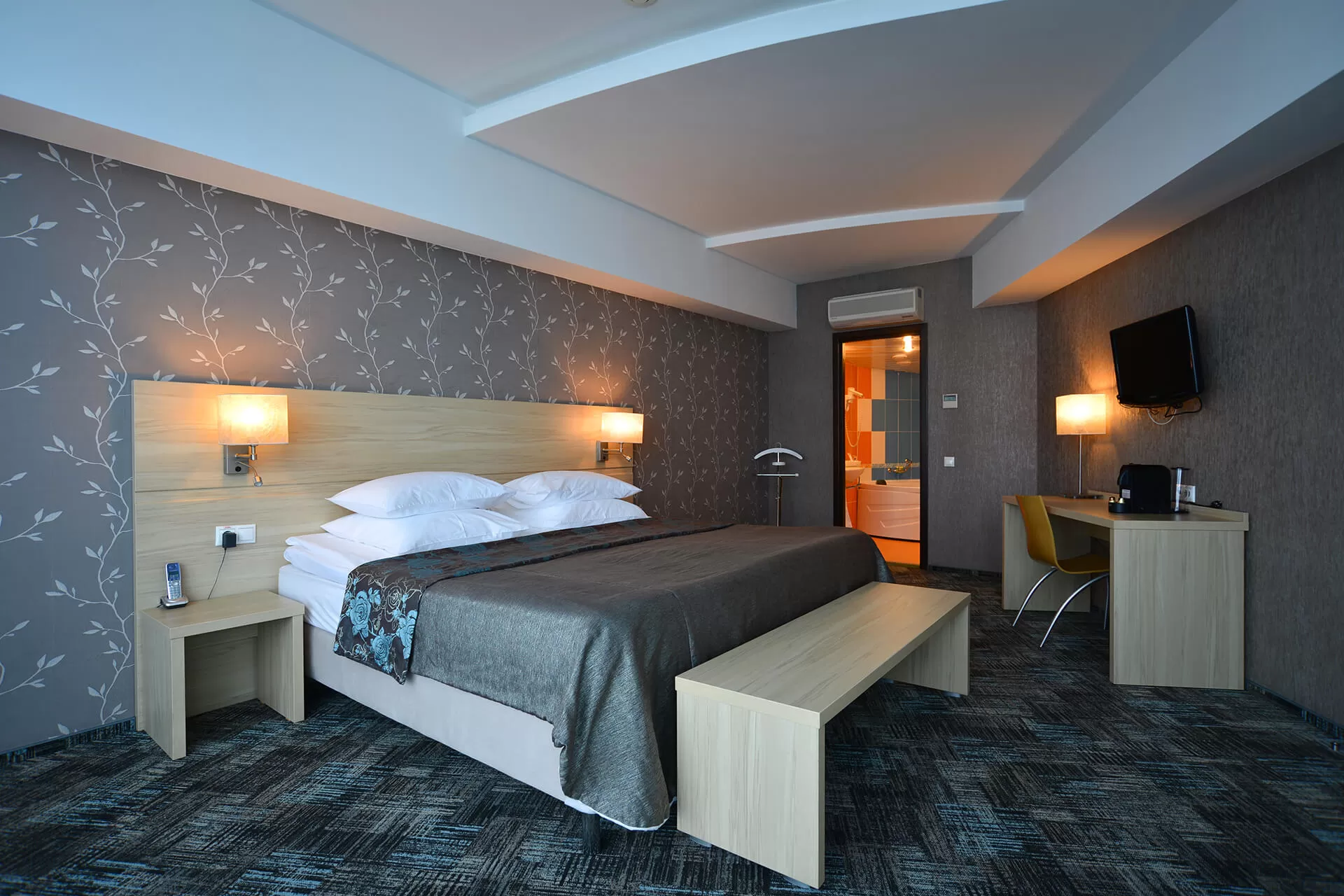Mayak Hotel Complex
Rooms
137 rooms: 8 categories of modern and cozy rooms with stylish design









Executive Suite, 129 sq.m.
The Irtysh Building
2 rooms
3
129 sq.m.
2 rooms
12500 ₽
/day
Executive Suite








Apartment, 73 sq.m.
The Irtysh Building
2 rooms
3
73 sq.m.
2 rooms
8600 ₽
/day
Apartment






Luxe, 66 sq.m.
The Irtysh Building
2 rooms
3
66 sq.m.
2 rooms
8600 ₽
/day
Deluxe









Studio, 67 sq.m.
The Irtysh Building
8 rooms
4
67 sq.m.
1 room
7600 ₽
/day
Studio











Superior Room, 45 sq.m.
The Irtysh Building
29 rooms
3
45 sq.m.
1 room
6600 ₽
/day
Superior room









Single Comfort, 36 sq.m.
The Irtysh Building
9 rooms
2
36 sq.m.
1 room
6100 ₽
/day
Single comfort




Twin, 41 sq.m.
The Irtysh Building
10 rooms
2
41 sq.m.
1 room
6000 ₽
/day
Twin







Single Standard, 28 sq.m.
The Irtysh Building
10 rooms
1
28 sq.m.
1 room
5000 ₽
/day
Single standard










Superior Luxe, 86 sq.m.
The Om Building
2 rooms
3
86 sq.m.
2 rooms
7600 ₽
/day
Superior Luxe











Luxe, 66 sq.m.
The Om Building
2 rooms
3
66 sq.m.
2 rooms
6600 ₽
/day
Luxe








Junior Suite, 30 sq.m.
The Om Building
9 rooms
1
30 sq.m.
1 room
5000 ₽
/day
Junior suite




Single Standard, 22 sq.m.
The Om Building
4 rooms
1
22 sq.m.
1 room
4500 ₽
/day
Single standard





Single Standard, 16 sq.m.
The Om Building
11 rooms
1
16 sq.m.
1 room
3900 ₽
/day
Single standard



Single Standard, 14 sq.m.
The Om Building
37 rooms
1
14 sq.m.
1 room
3600 ₽
/day
Single standard
for your comfort



Buffet breakfast
From 7:00 to 11:00 in a good restaurant



The city center
The Mayak Hotel is more than a place to stay and relax. This is a real center of the cultural and business life of the city of Omsk. The convenient location at the confluence of the Omi and Irtysh, in the historical center of the city, made the Mayak an ideal place for those who want not only to relax, but also to get acquainted with the main sights of Omsk.



Fitness room
Even when away from home, do not change your sports habits



Babylon Cinema
There is a modern cinema in the hotel building. There is a 20% discount for the staying guests%

 Русский
Русский